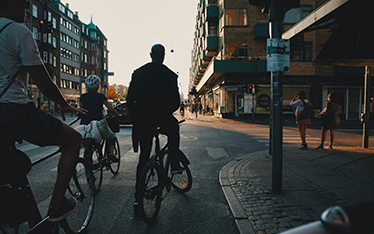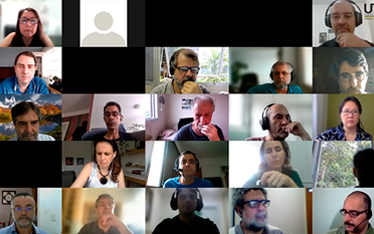Accessibility Tools
 Foi aprovado o acréscimo de 20 vagas para o curso de Mestrado com um novo Processo Seletivo para 2022.3.
Foi aprovado o acréscimo de 20 vagas para o curso de Mestrado com um novo Processo Seletivo para 2022.3.
Entre os dias 11/04/2022 e 13/05/2022 o PET receberá inscrições para o curso de Mestrado.
Além disso, estão abertas as inscrições no processo seletivo de candidatos, para o preenchimento de vagas no Doutorado do PET, para o ano letivo de 2022.
Confira os Editais e os Anexos abaixo:
 Parceria entre as duas organizações reconhece pesquisas na área de mobilidade urbana
Parceria entre as duas organizações reconhece pesquisas na área de mobilidade urbanaA CAPES e a Fundação Grupo Volkswagen celebraram, nesta quinta-feira, 30/12, acordo de cooperação técnica – publicado no Diário Oficial da União (DOU) desta sexta-feira, 31 de dezembro de 2021 – que vai premiar artigos científicos sobre mobilidade urbana sustentável. O Prêmio CAPES/Fundação Grupo Volkswagen de Excelência em Pesquisa em Mobilidade Urbana Sustentável será oferecido a cada dois anos a três pesquisadores brasileiros, autores de artigos científicos aceitos ou publicados em periódicos científicos de alto impacto acadêmico, relacionados à área em questão.
A iniciativa pretende estimular e dar ampla divulgação, no País e no exterior, a pesquisas e estudos acadêmicos sobre fontes limpas e alternativas de energia para os meios de transportes rodoviários leves e pesados. O documento estabelece premiações em 2022 e 2024. O edital está previsto para ser publicado ainda no primeiro semestre de 2022, no Diário Oficial da União.
Os vencedores receberão prêmio individual em dinheiro, no valor de R$25 mil. Os valores serão oferecidos pela Fundação Grupo Volkswagen. A premiação será conduzida por uma comissão organizadora, composta por quatro membros, dois de cada instituição. Caberá à CAPES a coordenação geral dos trabalhos.
A Fundação Grupo Volkswagen é uma entidade de direito privado, sem fins lucrativos, com sede em São Bernardo do Campo (SP). Sua missão é promover transformações positivas que impulsionem melhorias na educação e mobilizem cidadãos para atuarem como protagonistas do desenvolvimento de comunidades.
A Coordenação de Aperfeiçoamento de Pessoal de Nível Superior (CAPES) é um órgão vinculado ao Ministério da Educação (MEC).
(Brasília – Redação CCS/CAPES)
A reprodução das notícias é autorizada desde que contenha a assinatura CCS/CAPES

Confira abaixo a Reunião com os Coordenadores de Pós-Graduação, que ocorreu no dia 16 de dezembro de 2021.
 A partir das 9 horas de hoje, de acordo com o calendário da Consulta Direta para indicação da Coordenação do Programa de Engenharia de Transportes da COPPE/UFRJ - PET, enviado no dia 08/12/21, ocorrerá a votação eletrônica. Houve a candidatura de uma chapa. O documento que apresenta a proposta da respectiva chapa e o regimento da consulta direta se encontram em anexo neste e-mail.
A partir das 9 horas de hoje, de acordo com o calendário da Consulta Direta para indicação da Coordenação do Programa de Engenharia de Transportes da COPPE/UFRJ - PET, enviado no dia 08/12/21, ocorrerá a votação eletrônica. Houve a candidatura de uma chapa. O documento que apresenta a proposta da respectiva chapa e o regimento da consulta direta se encontram em anexo neste e-mail.
O sistema de votação estará aberto a partir das 9 horas do dia 16 de dezembro e fechará às 18 horas do dia 17 de dezembro. Para a votação é necessário acessar o link abaixo com o seu e-mail “@pet.coppe.ufrj.br”.
